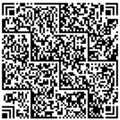common to all inverse systems. Direct-inverse systems on verbs coexist with the various morphosyntactic alignments in nouns. In some inverse languages, including...
13 KB (1,635 words) - 13:21, 14 April 2025
In linguistics, morphosyntactic alignment is the grammatical relationship between arguments—specifically, between the two arguments (in English, subject...
20 KB (2,389 words) - 13:37, 27 April 2025
Direct voice may refer to: Direct–inverse alignment, a proposed concept in linguistic typology Direct voice mediumship, the hypothesis that spirits speak...
264 bytes (66 words) - 06:49, 24 February 2025
In the field of artificial intelligence (AI), alignment aims to steer AI systems toward a person's or group's intended goals, preferences, or ethical...
133 KB (13,069 words) - 15:35, 21 July 2025
verb, and O is the direct object (or most patient-like) argument of a transitive verb. English has nominative–accusative alignment in its case marking...
20 KB (2,151 words) - 09:25, 15 March 2025
Polar alignment is the act of aligning the rotational axis of a telescope's equatorial mount or a sundial's gnomon with a celestial pole to parallel Earth's...
12 KB (1,587 words) - 00:17, 16 March 2025
In linguistic typology, tripartite alignment is a type of morphosyntactic alignment in which the main argument ('subject') of an intransitive verb, the...
13 KB (1,348 words) - 05:11, 18 June 2025
In linguistic typology, ergative–absolutive alignment is a type of morphosyntactic alignment in which the subject of an intransitive verb behaves like...
48 KB (4,589 words) - 10:57, 3 August 2025
other grammatical person (see Direct–inverse alignment). For example, "I see him/her" (ni...wāpam...ā...w) is a direct action because the first person...
36 KB (3,195 words) - 22:51, 15 July 2025
typology, active–stative alignment (also split intransitive alignment or semantic alignment) is a type of morphosyntactic alignment in which the sole argument...
23 KB (2,621 words) - 14:40, 22 June 2025
suffix, -in, marks the subject in the inverse. Both subject and object are then always in the third-person. Direct (same as above example): ku and i-q̓ínu-šan-a...
12 KB (1,663 words) - 13:57, 27 March 2025
ergative Symmetrical voice Active–stative Tripartite Nominative–absolutive Direct-inverse Ditransitive/Monotransitive Secundative Indirective Zero-marking Dependent-marking...
11 KB (1,104 words) - 03:51, 13 June 2025
Gautheret D, Lambert A (November 2001). "Direct RNA motif definition and identification from multiple sequence alignments using secondary structure profiles"...
156 KB (8,514 words) - 07:08, 12 July 2025
all phrasal heads must be marked with either agreement morphemes of their direct argument or else incorporate these arguments in that head. This definition...
36 KB (4,687 words) - 18:21, 2 July 2025
ergative Symmetrical voice Active–stative Tripartite Nominative–absolutive Direct-inverse Ditransitive/Monotransitive Secundative Indirective Zero-marking Dependent-marking...
9 KB (1,289 words) - 02:35, 1 August 2025
ergative Symmetrical voice Active–stative Tripartite Nominative–absolutive Direct-inverse Ditransitive/Monotransitive Secundative Indirective Zero-marking Dependent-marking...
9 KB (896 words) - 17:39, 22 July 2025
(grammar) Dative case Ditransitive verb Ergative–absolutive alignment Morphosyntactic alignment Blansitt, E.L. Jr. (1984). "Dechticaetiative and dative"...
6 KB (963 words) - 01:07, 8 April 2025
nominative alignment is an unusual type of morphosyntactic alignment similar to, and often considered a subtype of, a nominative–accusative alignment. In a...
6 KB (695 words) - 22:46, 8 July 2025
ergative Symmetrical voice Active–stative Tripartite Nominative–absolutive Direct-inverse Ditransitive/Monotransitive Secundative Indirective Zero-marking Dependent-marking...
28 KB (4,035 words) - 04:23, 7 June 2025
Symmetrical voice (redirect from Austronesian alignment)
known as Austronesian alignment or the Austronesian focus system, is a typologically unusual kind of morphosyntactic alignment in which "one argument...
103 KB (15,754 words) - 06:05, 1 June 2025
and I killed. The syntactic pivot is a feature of the morphosyntactic alignment of the language. In nominative–accusative languages, the syntactic pivot...
3 KB (407 words) - 21:32, 29 November 2021
non-Slavic Russia. Constructed languages take a variety of morphological alignments. The concept of discrete morphological categories has been criticized...
21 KB (2,208 words) - 12:17, 7 May 2025
ergative Symmetrical voice Active–stative Tripartite Nominative–absolutive Direct-inverse Ditransitive/Monotransitive Secundative Indirective Zero-marking Dependent-marking...
11 KB (1,178 words) - 14:29, 26 July 2025
Han Xin code (section Alignment pattern)
distorted barcodes. Alignment Patterns in Han Xin code are split into: Alignment Pattern – set of step-wise alignment lines; Assistant Alignment Pattern - 6 modules...
35 KB (2,966 words) - 22:05, 8 July 2025
him/her’ (direct); páwapaataya łmámayin ‘the old woman helped him/her’ (inverse). In languages with an optional ergative, the choice between marking the...
5 KB (474 words) - 14:21, 13 January 2025
In linguistic typology, nominative–absolutive alignment is a type of morphosyntactic alignment in which the sole argument of an intransitive verb shares...
9 KB (1,062 words) - 10:08, 18 August 2024
ergative Symmetrical voice Active–stative Tripartite Nominative–absolutive Direct-inverse Ditransitive/Monotransitive Secundative Indirective Zero-marking Dependent-marking...
20 KB (2,607 words) - 15:18, 30 July 2025
ergative Symmetrical voice Active–stative Tripartite Nominative–absolutive Direct-inverse Ditransitive/Monotransitive Secundative Indirective Zero-marking Dependent-marking...
7 KB (680 words) - 22:11, 17 May 2025
is in direct alignment with the vector of rotation, and the Y component becomes the Q component, which is at a quadrature angle to the direct component...
27 KB (4,676 words) - 18:25, 26 July 2025
refers to the direct interaction between two magnetic dipoles. Roughly speaking, the magnetic field of a dipole goes as the inverse cube of the distance...
6 KB (1,027 words) - 02:27, 30 July 2025



